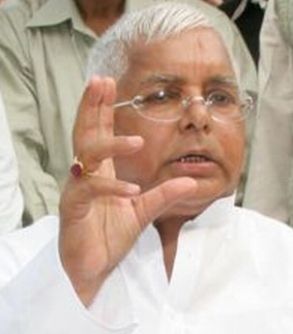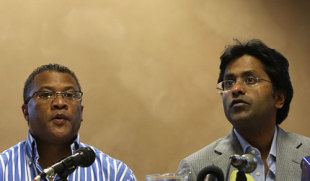


 The General Election 2009 is not dominated by any personality. It is the complete absence of a figure such as Barack Obama, Sheikh Hasina, Indira Gandhi or even an Atal Bihari Vajpayee. We have leaders, but no one who drives popular choices at the national level. There are so many Prime Ministerial candidates in the battle ground of 2009 elections.
The General Election 2009 is not dominated by any personality. It is the complete absence of a figure such as Barack Obama, Sheikh Hasina, Indira Gandhi or even an Atal Bihari Vajpayee. We have leaders, but no one who drives popular choices at the national level. There are so many Prime Ministerial candidates in the battle ground of 2009 elections.On January 24th, 2009, Manmohan Singh underwent cardiac bypass surgery at All India Institute of Medical Sciences, New Delhi. Following the surgery, speculation of alternate PM candidates arose both within the Congress and amongst coalition partners. In an attempt to quell such speculations, Sonia Gandhi announced that Manmohan Singh is the UPA coalition's Prime Ministerial candidate for the 2009 elections. United Progressive Alliance is projecting Prime Minister Manmohan Singh as the Prime Ministerial candidate in the elections. Following the August 2008 confidence vote victory for the current government, Congress is seeing the right person in Manmohan Singh to lead it to the battle field of the 2009 elections. He is having Clean image, better economic knowledge and is acceptable to all, but weak leadership can go against him if Congress couldn't come up as single largest party.
National Democratic Alliance The main opposition, the Bharatiya Janata Party (BJP) and its coalition partners in the National Democratic Alliance, announced that their candidate for prime minister would be BJP party leader Lal Krishna Advani, the Leader of the Opposition. On January 23, 2008, leaders from BJP and other NDA parties convened to officially elect him their candidate. No other party or alliance has announced a prime ministerial candidate. Strong leadership quality is his strength, but less faith of minorities can go against him.
Third Front a motley group of regional parties, as well as the Communist parties, have been striving to form a third front to counter the BJP-led and Congress-led alliances. Among the members are the United National Progressive Alliance, India's Left parties and the Bahujan Samaj Party. Once again, the media has speculated that Mayawati, the chief minister of Uttar Pradesh, could potentially be projected as the front's Prime Ministerial candidate, but no official move has taken place yet. If Mayawati's party can win enough seats, she has openly stated that she would be willing to take the support of the national parties to become Prime Minister. The factor of being a 'Dalit' can go with her. Nationalist Congress Party leader Sharad Pawar has indicated that he is also a possible Prime Ministerial candidate post elections.
Another possibility arising in last few days could be the 'Secular Front' formed by Lalu Prasad Yadav's Rastriya Janta Dal (RJD), Mulayam Singh Yadav's Samajwadi Party (SP) and Ram Vilas Paswan's Lok Jansakti Party (LJP). Any of them could arise as the candidate for top job depending upon their seats. Lalu and Mulayam is having those 'skills' and experience while Paswan is again a 'Dalit' leader.



